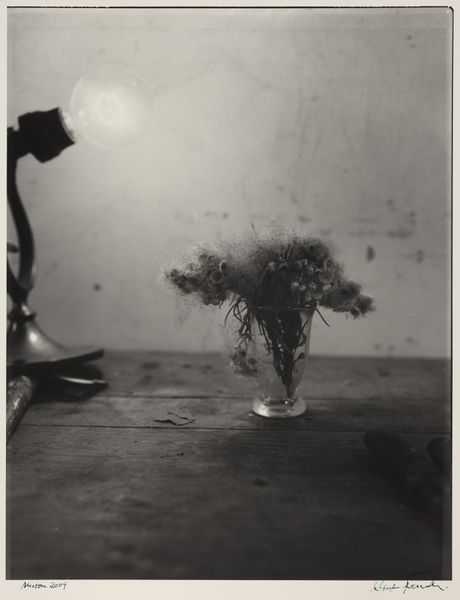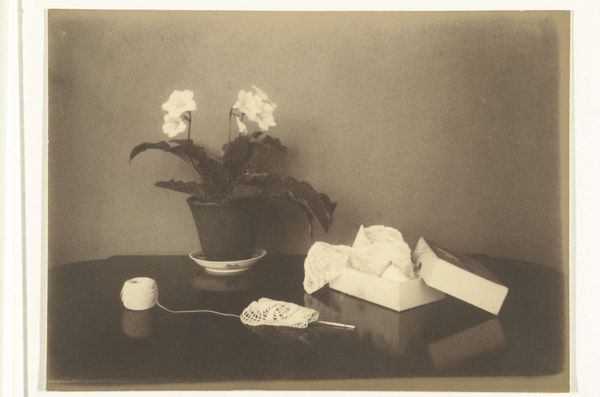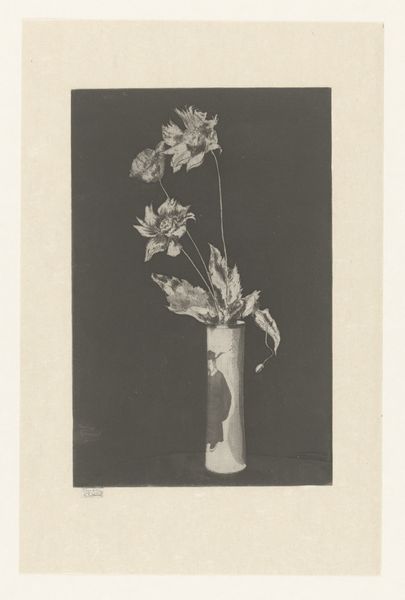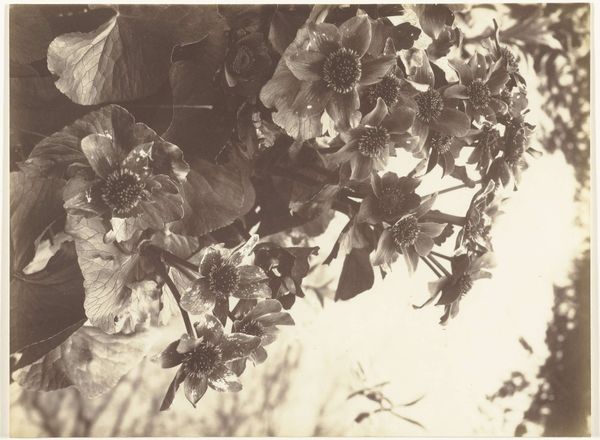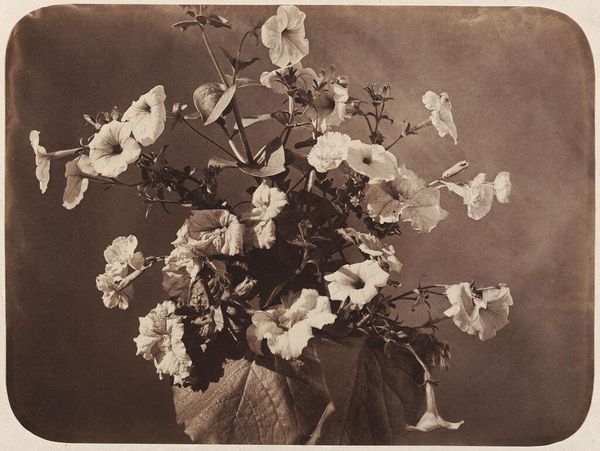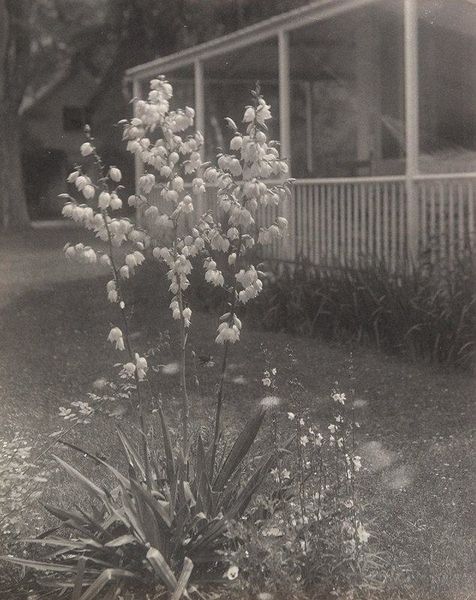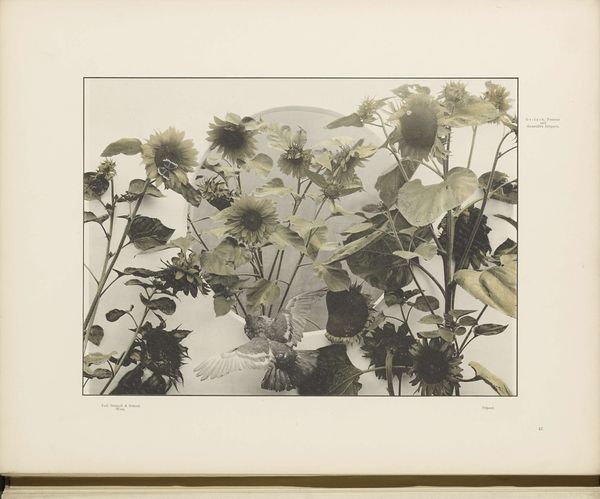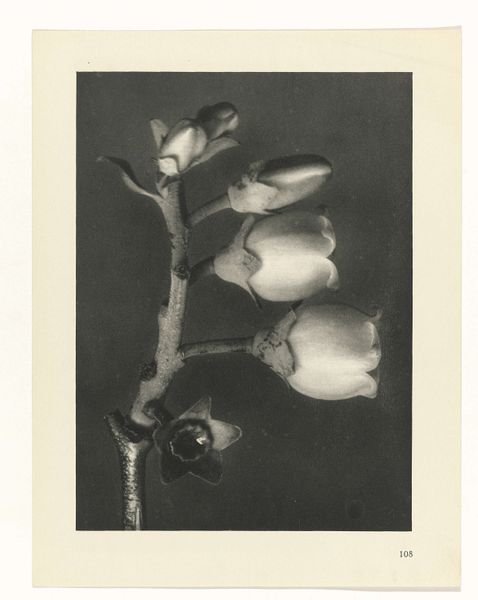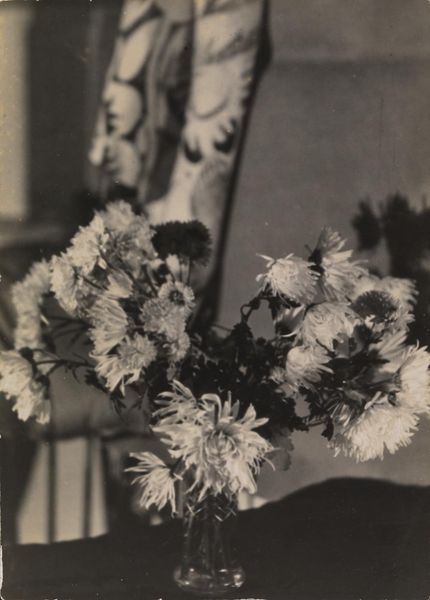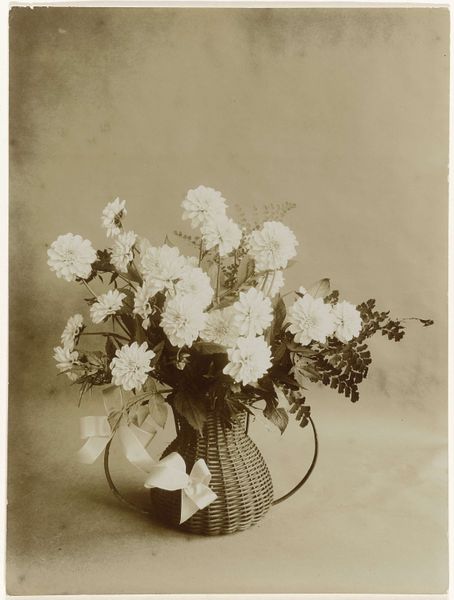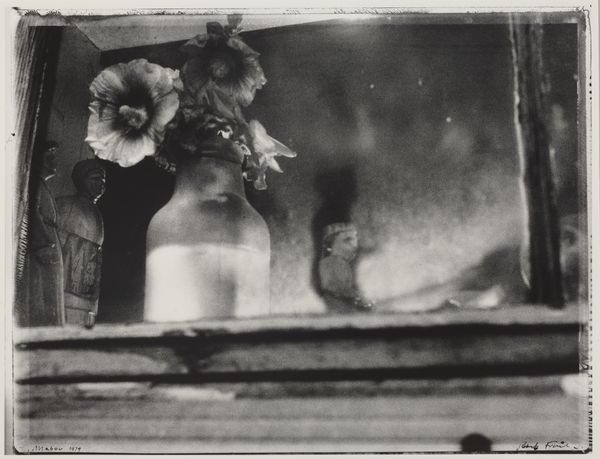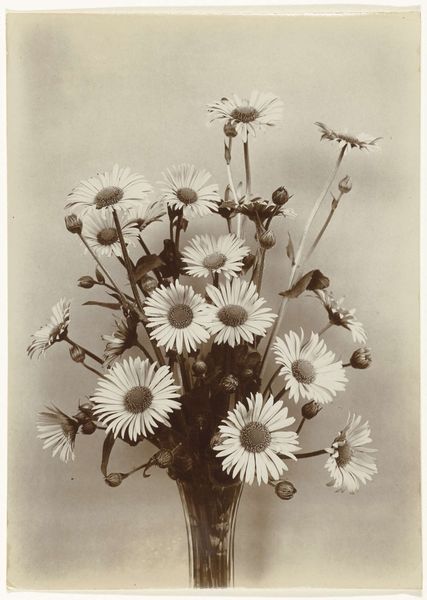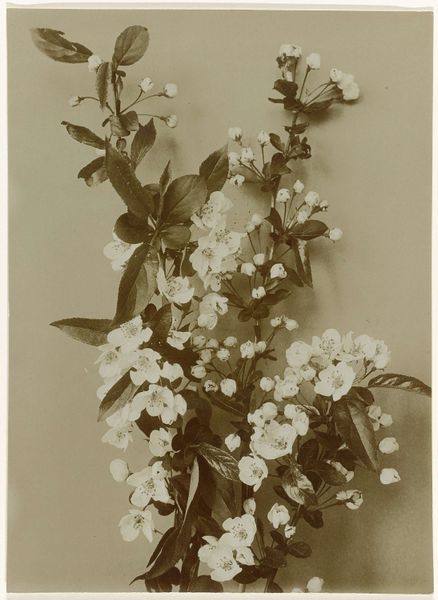
print, photography
# print
#
photography
Dimensions: image: 4.8 x 4.9 cm (1 7/8 x 1 15/16 in.) sheet: 5.4 x 5.6 cm (2 1/8 x 2 3/16 in.)
Copyright: National Gallery of Art: CC0 1.0
Curator: I’m drawn in by the delicate balance between resilience and fragility in this photograph. Editor: Ah, you've picked up on the very thing that makes Robert Frank so special! This gelatin silver print, likely from between 1941 and 1945, he simply called "Cactus Flowers." The subject itself plays so perfectly with Frank's recurring themes, doesn’t it? The everyday juxtaposed with the exotic, the starkness alongside something quietly lovely. Curator: Absolutely. I see the sunlight carving dramatic shadows, making almost thorny silhouettes out of something meant to be so gentle and inviting. And that tonal range! The deep blacks versus almost bleached highlights--a raw and almost painful tenderness emerges. It whispers of perseverance, of beauty in harsh circumstances. It feels extremely personal. Editor: The contrast speaks volumes. It feels worth noting that he began working on photography and exploring printmaking around this period in Switzerland, while he was just on the cusp of immigrating to the US. It seems those social constraints only fueled his creativity and desire to explore this subject. These potted plants against the window... you've got to wonder if it offered some tiny semblance of control in an utterly uncontrollable climate. Curator: Do you think the decision to shoot in black and white enhances this sense of quiet strength? It almost distills it to its rawest essence, right? Editor: Without question. It feels inherently honest to its subject: a symbol of simple survival. Stripped of color, all pretense falls away. You see just what endures, quite literally, beneath the surface. The lack of embellishment gives the plant’s resilience a sharper bite, don’t you think? A softer take on natural fortitude simply wouldn’t resonate quite so deeply, especially when placed against that crisp light and shadowy backdrop. Curator: The shadows feel particularly crucial because they suggest an existence beyond what we are actually seeing-- an extended narrative we only get a glimpse of. They remind me a bit of Plato's cave, honestly. We are seeing projections on a plane, and yet our minds grasp more than just shape or tonal values. We get this little taste of "real." It's such a lovely tease, frankly. Editor: A tease indeed! And in looking closer I have the urge to know much more, but perhaps it is for the best to not have all the answers at our disposal.
Comments
No comments
Be the first to comment and join the conversation on the ultimate creative platform.

